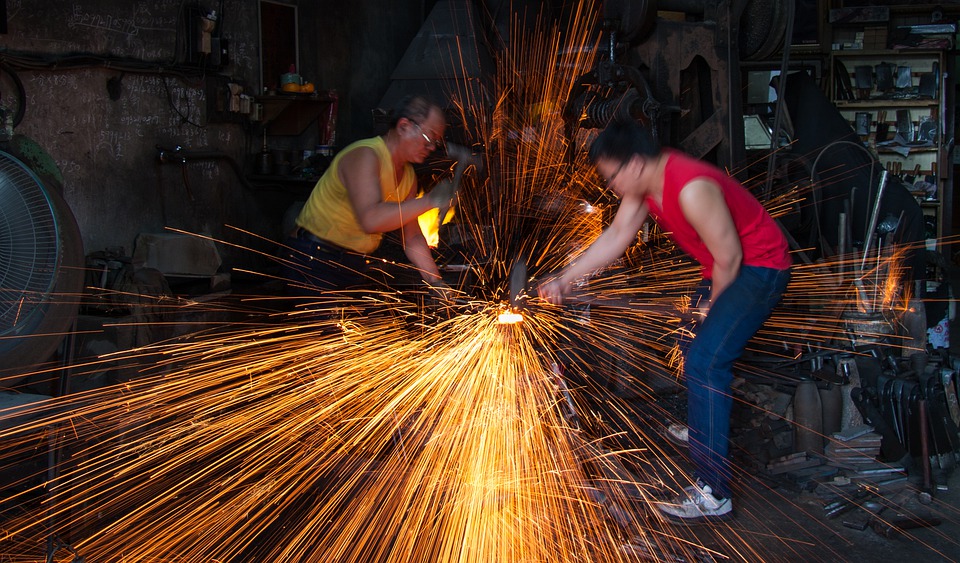
Selling an Efficient Manufacturing Company in the Covid-19 Era
First Order of Business is Occupational Health and Safety. By Frances A. Brunelle
Due to Covid-19, more small and midsized manufacturers ($2 million to $20 million) will either close or be sold. For those owners who are thinking of selling their manufacturing operation, occupation health and safety should be #1 on the list of issues to address when preparing their company for sale.
With so much of the world on lockdown, more industrial enterprises are using Q2 2020 to evaluate the short-term game plan. Companies will enter Q3/Q4 2020 and all of 2021 with one thought: acquire or be acquired.
Manufacturing occupational health and safety processes prevents or lessens the risk of workplace injury, illness, and even death. These are the right actions to take, whether a manufacturer is looking to be acquired or not.
Manufacturing facilities and management with an emphasis on safety as a top-level priority, remain highly productive, competitive, and profitable in today’s marketplace. Never before has this been more apropos than in the time of Covid-19.
The manufacturing sector has changed considerably in the last few decades, with the challenges of escalating structural costs, an ageing workforce, and a widening skills gap to meet demand.
This complex business environment presents tough challenges often complicated by expensive and extensive workers’ compensation claims. Potential acquirers take a critical and appropriate examination of safety processes.
Buyers want to see that steps have been taken to reduce safety claims. The Covid-19 non-stop news has shown the cost of poor occupational health and safety practices.
Department of Labor (DOL) agencies are responsible for the administration and enforcement of the laws enacted to protect the safety and health of workers in America. Occupational Safety and Health Administration (OSHA) jurisdiction addresses most employees, with some exceptions such as miners, some transportation workers, many public employees, and the self-employed.
Employers subject to OSHA also have a general duty to provide work and a workplace free from recognized, serious hazards. OSHA also administers the Whistleblower Protection Program, ensuring an employer cannot retaliate by taking “adverse action” against workers who report injuries, safety concerns, or other protected activity.
OHS: The top priority for manufacturers looking to sell their operation
Just as Baby Boomers on the manufacturing plant floor are getting ready to retire, so are the owners. More than 5,000 small manufacturing operations (with annual revenues between $2 million to $20 million) will either close their doors or find new owners in the next two years.
Manufacturing owners of smaller operations are using these “down months” to consider what they can do to make their businesses more attractive and worthwhile to prospective buyers.
Because Accelerated Manufacturing Brokers only deals in the manufacturing sector, years of experience have taught the team what buyers want to see and similarly what they want to avoid. Understanding the mindset of the prospective buyer makes or breaks a sale.
The characteristics of the new buyer have changed, with an increasing emphasis in sales, marketing, and business development skills. These new buyers are frequently from other sectors with less manufacturing experience.
This new breed of buyer wants to know that the fundamental issues of occupational health and safety are systemically addressed. Before Covid-19 this might have been fourth or fifth on the list. Now it’s number 1.
Proper OHS processes mitigate risk for acquirers of manufacturing companies
Manufacturing buyers want to know that the OHS risks have been mitigated by the seller. They want to know that worker’s compensation claims, regulator safety compliance requirements (such as fork truck driver education), and all other employee safety issues have been documented and addressed.
Manufacturing safety is important to prevent or lessen the risk of workplace injury, illness, and death. While that may seem obvious operationally, to a buyer only those manufacturing facilities which continue to emphasize safety as a top-level issue will remain highly productive, competitive, and profitable in today’s marketplace.
Incident reports will reflect if the manufacturer has a strong handle on OHS issues. The new buyer may come from a hedge fund, large bank, or corporation. While the OHS issues are different in manufacturing, they understand documented processes.
These are the best indicators whether a manufacturing company will be sold or not. With safety standards established, many buyers’ fears are removed. When safety is documented and addressed, the ability to get top asking price is statistically improved.

Author Profile: Frances Brunelle is the founder of Accelerated Manufacturing Brokers, Inc., specializing in the sale of lower middle market manufacturing companies nationally. Additionally, she hosts the WAM Podcast (Woman and Manufacturing), which highlights and profiles the opportunities for women in senior management and ownership positions. Fran and her team help to ensure the continuity of US Manufacturing by transitioning ownership to the next generation of entrepreneurs. Fran writes on topics that help manufacturing business owners prepare their companies for sale and navigate the sale process to ensure a positive financial result in support of their retirement. Fran was recently named to 2020 Most Influential Women in Mid-Market M&A in Mergers & Acquisitions publication. Get listings alerts before the public here.

